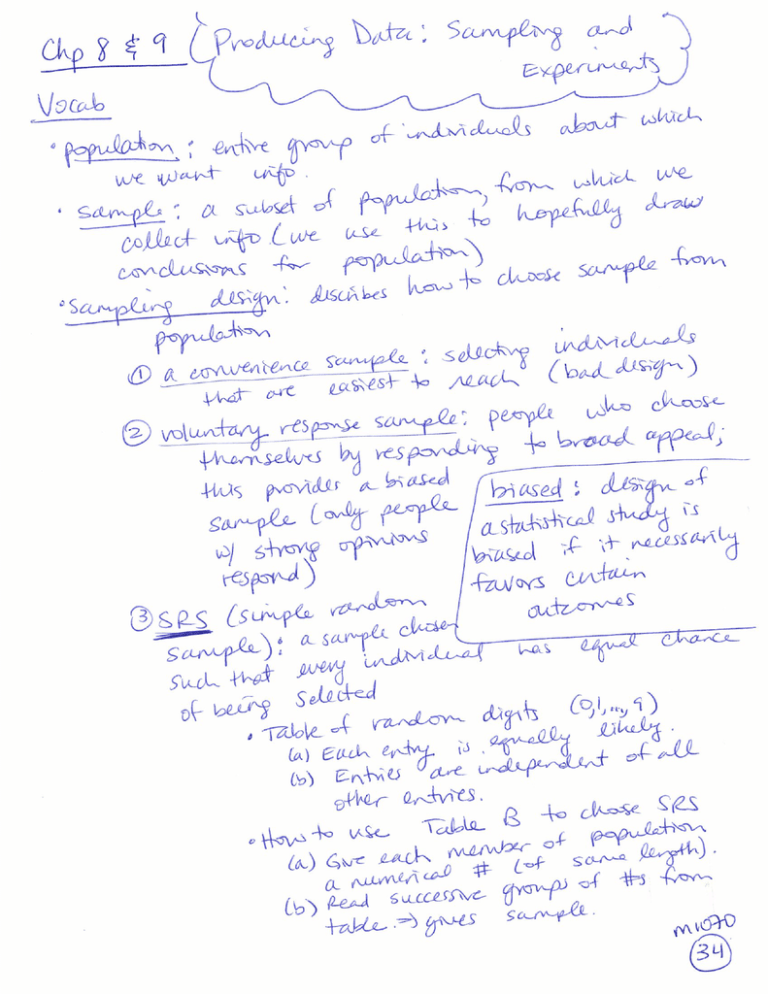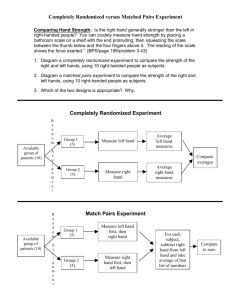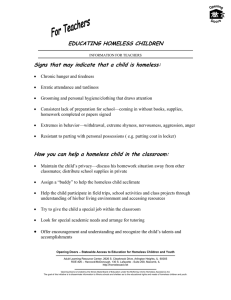S CL ~ c~th L
advertisement

~azc: CL ~ ~ c~th c>4- L4%tD 5CCV%~~e4-\f~ o~ ~ ~° ~c L wa oLoo~ (~D&4~~ ~Ucr) & ~ cetop~4) vcs WAs ~JJr t t S cLtSt’ k-s L~ ~ 54v’~~~ crt~ ≤&~~ v29 ~cccLck I4~ (su~ S~cL ~ S tL!;j t~zi4e~ (CL) (~ sa~ak ~6 ~~\4~V~U ~+a~ ~trC o4-~*v~es. 4cJ~c I) a~ S uictcfl~iC +zai~A- ~ &~ts S c~k~? (&c%%4) S ~OO 40 (LO (b~ ~ pLoce ~ ~ ~ (c) ~ of ~ ~ ~ cccv~1o& Lgh4~tt~co-Q S O J~°~ G ~ s ~fv~p~tL2 ) Sa~p~ wit ~ ~ ~) of ~g~v~OvtfS ~ 41—4€ 4 24 Sf-&5 +~ ~ a ~ ~ 9~ o~ s I J&cs) s+ax+’~~ ~ ~s ~ ~ ~ ~o I ~ ~ Q~i~cA- °~‘ ~ 9 ~9 } 0A S ~ I fl~ S~ fA~Ot~O S g (c≠c4) stLyt S cótd~ v~ F ~ ~ caS ~ ~ 40 LAi~ - ~ CCtL~y~ ~ ) ~ orv&r o~ s a~r~~p& ~ — I, .A~k a sIiiipic of college students these two How happ~ are ~ o ycTh J4s LItiestiolls: u with your life in general?” (Ansu ers n i scale at I to Ho” nianv dates did you have last month The correlation between answers is r = —0.012 when i ked in this order. Lt appear’ that dating has little to do with happiness. Reverse the rdcr ot the qUestions, however, and r = 0.66. Asking a question that brings dating to mind makes dating success a hi~ factor in happiness. rtu~s 692 TABLE S TABLES Random digits LINE 101 102 (03 04 105 106 107 108 109 110 III 112 113 114 115 116 117 118 119 120 121 122 123 124 125 126 127 128 129 130 131 132 133 134 135 136 137 138 139 140 141 142 143 144 145 146 147 148 149 150 19223 73676 45467 52711 95592 68417 82739 60940 47(50 71709 38889 94007 35013 57890 72024 05756 99400 77558 93074 69971 15529 20807 17868 2871$ 0(927 00095 60227 91481 72765 47511 24943 36009 19365 15412 39638 38448 81486 59636 62568 45149 61041 14459 38167 73190 95857 35476 71487 13873 54580 71035 96746 96927 43909 15689 36759 69051 05007 68732 45740 27816 66925 08421 53645 66831 55588 12975 96767 72829 88565 62964 19687 37609 54973 00694 71546 07511 48789 69487 $8804 70206 32992 77684 26056 98532 32533 07118 55972 09984 81598 81507 09001 12149 19931 99477 14227 58984 64817 16632 55259 41807 78416 55658 44753 66812 68908 99404 13258 35964 50232 42628 88145 12633 59057 86278 05977 05233 88915 18338 60513 04634 40325 75730 94322 31424 62183 04470 87664 39421 29077 95052 27102 43367 37823 36809 25330 06565 68288 87174 81194 84292 65561 18329 39100 77377 61421 40772 70708 13048 23822 97892 17797 83083 57857 66967 88737 19664 53946 41267 24697 09297 71197 03699 66280 24709 80371 70632 29669 92099 65850 14863 90908 56027 49497 71868 74192 64359 14374 22913 09517 14873 08796 33302 21337 78458 28744 47836 21558 41098 45144 96012 63408 49376 69453 95806 83401 74351 65441 68743 16853 95034 96409 27754 2863 40011 60779 85089 81676 61790 85453 39364 00412 19352 71080 038(9 73698 65103 23417 84407 58806 04266 61683 75592 55892 72719 (8442 77567 40085 13352 18638 84534 04197 43165 07051 35213 11206 75592 12609 47781 43563 72321 94591 77919 61762 46109 09931 60705 47500 20903 72460 84569 12531 42648 29485 85848 53791 57067 55300 90656 46816 42006 71238 73089 22553 56202 14526 62253 26185 90785 66979 35435 47052 75186 33063 96758 351(9 88741 16925 49367 54303 06489 85576 93739 93623 37741 19876 08563 15373 33586 56934 81940 65(94 44575 16953 59505 02150 02384 84552 62371 27601 79367 42544 82425 82226 48767 (7297 50211 94383 87964 83485 76688 27649 8489$ 11486 02938 31893 50490 41448 65956 98624 43742 62224 87136 41842 276(1 62103 48409 85117 81982 00795 87201 45195 31685 18132 04312 87151 79140 98481 79177 48394 00360 50842 24870 88604 69680 43163 90597 19909 22725 45403 32337 82853 36290 90056 52573 59335 47487 14893 [8883 41979 08708 39950 45785 11776 709(5 32592 61181 75532 86382 84826 11937 51025 95761 81868 91596 39244 41903 36071 87209 08727 97245 96565 97150 09547 68508 31260 92454 14592 06928 51719 02428 53372 04178 12724 00900 58636 93600 67181 53340 88692 03316 \J0CJ0 4— ~-&.-eL5c.crfS O~DSaWe3 i-c v’~~-~ £4J26! -S £~3Jo ii N S~Q~tr~tia v’~°1-°-s sav~c 4- ,~A.n_o~cLJJ_e ~ r&S Is r~Sfo~t t___~ ~ Tc.r ~ vet9raWS cu~ ¼~ ~ C- VCS N @~pe4rL~~zt: ~rcQ4n cc~v~at0+ L24~ aces c~’~s - an~S nu~L~~ ~ * j-ê~fuJfl’ btc9-a~2~c c~&u’%aU-y (,rc~k, C a~ “-~r~ ~‘+ L’~J JALrkfl~ ~~kLes. Lc tc-~ a%penn& 04- ~4J%k~’~ M4~ A, ~v~t sJojcct CA—’ 6e I, %1A-0J4 ~ 5 cr~~° ~cSak res1fl~- 3- ~yptrLr~’e~ 4 44as flJ≥Q~ J~e,v~ ~ V~’~~w ≤~~L2~eck ~c Mt~0 C2xp I Ti oUo~3 - —~ &~ r’-~ ~ ~ asflr-n’-~~ ~ Its— cu-r-c. (z) ~LrC ~ e,~&s Bos~c 0ç ~ S~c+~c~O arfi ca~-°~ (~~C D~s~-v~ e4L ~cpzrct~aJEs ~4 9LLri0~ vojnaM-’~s ~ ~c) ~ (~) ~ &cs~) V&’ S 4c 6t a ~ 3 I, ~ V~i 4 v~ (I~ ~ Mt~0 -~ ~ [ J K K 2— Cell phones and brain cancer. A study of cell phones and the risk of brain cancer looked at a group of 469 people who have brain cancer. The investigators matched each cancer patient with a person of the same sex, age, and race “ho did not have brain cancer, then asked about use of cell phones.2 Result: Our data suggest that use ofhandheld cellular telephones is not associated with risk of brain cancer.” Is this an observational study or an experiment? Why? What are the explanat r~ md response variables? How long did I work? A psychologist wants to know ii the difficulty of a task influ ences our estimate of how Long we spend working at it. She designs two sets of nia:es that subjects can ~sork through on a computer. One set has easy mazes anti the other has hard mazes. Subjects work until told to stop (after 6 minutes, hut subjects do not know this). They are then asked to estimate how long they worked. The psychologist has 30 students available to serve as subjects. (a) Describe the design of a completely randomized experiment to learn the elfect oldifhculty on estimated time. (b) Describe the design of a matched pairs experiment using the same 30 subjects. jflt caD 9 ~3 (c~~v’*~ Attitudes toward homeless people. Negative altitudes toward poor people are common. Are attitudes more negative when a person is homeless? To find out, read to subjects a description of a poor person. There are two versions. One begins Jim is a 30-year-old single man. He is currently living in a small single-room apartment. The other description begins Jim is a 30-year-old single man. He is currently homeless and jives in a shelter for homeless people. Alter reading the description, ask subjects what they believe about Jim and what they think should be done to help him. The subjects are 544 adults Lnterviewed by telephone)2 Outline the design of this experiment. Experimental design. The clinical trial was a completely randomized experiment that asstgned 240 patients at random among 4 treatments as follows: Antibiotic pill Placebo pill 53 60 64 63 Sterotd spray Placebo spray (a) Outline the design of the experiment. (b) How will you label the 240 subjects? (c) Explain briefly how you would do the random assignment of patients to treat ments. Assign the first 5 patients who will receive the first treatment. ~dThD S i (cc~4) 4c~d aYarv~~r&~( Cell phones and driving Does talking on a hands-free cell phone distract dri~ers? Undergraduate students “drove” in a high-fidelity driving stmulator equipped with a hands free cell phone. Thc car ahead brakes: ho” quickly does the subject react? Let’s compare two designs for this experiment. There are 40 student subjects available. In a complet ly randomized design, aLl 40 subjects are assigned at random, 20 to simply drive and the other 20 t talk on the cell phone while driving. In the matched pairs design that was actually used, all subjects drive both with and without using the cell phone. The two drives are on separate days to reduce carryover effects. The order of the two treatments is assigned at random: 20 subjects are chosen to drive first with the phone, and the remaining 20 drive first without the phone.8 Some subjects naturally react faster than others. The completely randomized design relies on chance to distribute the faster subjects roughly evenly between the two groups. The matched pairs design compares each subject’s reaction time wtth nd without the cell phone. This makes it easi≥t to see the effects of using the phone.




